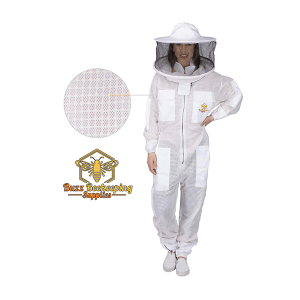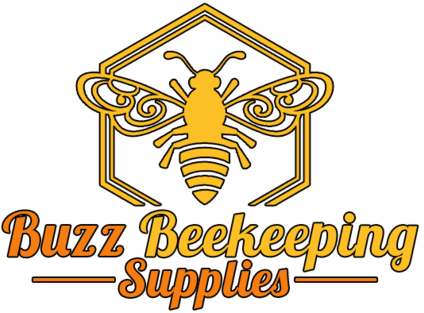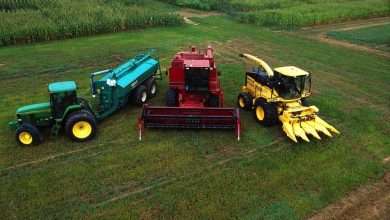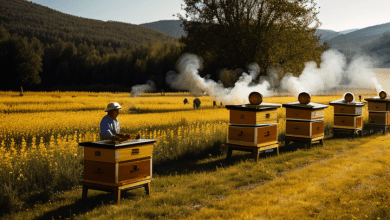Beekeeping Supplies Ohio

Beekeeping has a rich tradition in Ohio, dating back to the early settlers who recognized the value of honeybees for pollination and honey production.
Today, beekeepers in Ohio have access to a wide range of beekeeping supplies to support their hobby or business. From basic equipment like beehives and protective gear to advanced tools for honey extraction and pest management, Ohio offers a variety of options to meet the needs of beekeepers at every level. No matter where you are looking for beekeeping supplies in Ohio, we’ve got you covered.
Beekeeping in Ohio
Beekeeping is an integral part of agriculture in Ohio, a state known for its vast agricultural landscapes. In fact, Ohio ranks 21st in the United States in honey production, with an annual yield of 1,254,000 pounds.
Beekeeping Equipment
Before you embark on your beekeeping journey, it is crucial to understand the essential bee supplies required for successful hive management.
Beehive Components:
- Hive Boxes: Hive boxes, also known as supers, are essential components of a beehive. They serve as the living quarters for honeybees and their honeycombs. Ohio beekeepers can choose from a range of hive styles, including Langstroth, top bar, and Warre hives, depending on their preferences and the needs of their bees. These boxes come in different sizes to accommodate various stages of bee colony growth, and it is crucial to ensure the availability of high-quality hive boxes to maintain the comfort and productivity of honeybees.
- Frames: Frames are suspended within each hive box to provide structural support for the honeycombs. They also serve as a foundation for brood rearing and honey storage. Ohio beekeepers often use wooden frames with a plastic foundation, striking a balance between strength and ease of use. Properly assembled frames contribute to the bees’ ability to construct a well-organized colony and facilitate beekeeping management.
- Bottom Boards: Bottom boards act as the base of the beehive, providing stability and ventilation. They offer an entrance for the honeybees to come and go freely while defending their colony against intruders. In Ohio’s harsh climate, it is crucial to choose bottom boards that can withstand temperature fluctuations and provide adequate ventilation for the hive. Proper ventilation prevents moisture buildup, keeping the bees healthy and productive throughout the year.
- Inner Covers and Outer Covers: Completing the structural integrity of the hive, inner covers and outer covers provide insulation and protection to the honeybees. Inner covers add an extra layer of insulation, while outer covers safeguard the hive from harsh weather conditions, including rain, snow, and wind. These covers contribute to the overall hive survival and help maintain a stable environment for the honeybees.
Protective Gear:
Investing in quality protective clothing is crucial to ensure the safety and comfort of beekeepers during hive inspections and honey harvesting. Here is a comprehensive guide to the various options available, helping you make well-informed choices for your beekeeping journey.
- Bee Suit: Essential Protection for Beekeepers – A bee suit is an indispensable piece of protective clothing for beekeepers. It provides vital protection against bee stings and offers maximum coverage during beekeeping activities. There are two main types of bee suits to consider: canvas beekeeping suits and ventilated bee suits. Canvas beekeeping suits are renowned for their durability and excellent sting resistance. These suits are ideal for providing robust protection and are particularly effective at shielding beekeepers from stings. On the other hand, ventilated bee suits are designed with a breathable mesh fabric, allowing beekeepers to work comfortably in hot weather conditions while still ensuring protection from bee stings.

- Bee Gloves: Selecting the right pair of beekeeping gloves is essential in safeguarding your hands from stings while maintaining dexterity. There are two primary options to consider: goatskin bee gloves and cowhide bee gloves. Goatskin bee gloves are known for their exceptional tactile sensitivity, enabling beekeepers to handle delicate tasks with ease while still offering protection from stings. Alternatively, cowhide gloves provide robust protection against bee stings due to their thick leather construction, ensuring the safety of beekeepers’ hands.
- Beekeeping Boots: When tending to honey bee colonies, protecting your feet is equally important. Beekeeping boots are specifically designed to prevent bees from accessing your feet, offering a vital addition to your beekeeping supplies. These boots typically feature a sturdy construction and protective padding to shield beekeepers from stings while also providing comfort and ankle support.
- Veil: A reliable beekeeping veil is essential for safeguarding your face and neck from bee stings. These veils are typically crafted from a fine mesh that allows for excellent visibility while ensuring bees cannot reach your skin. Some veils come attached to beekeeping suits or jackets, while others are detachable, offering flexibility to suit individual preferences.
Purchasing Options and Considerations
In many cases, beekeepers can purchase a combo pack of a bee suit and bee gloves at a discounted price, providing a convenient and cost-effective solution for acquiring essential protective clothing for beekeeping.
Beekeeping Tools:
As a beekeeper in Ohio, it’s essential to have a well-stocked arsenal of equipment to ensure the smooth management of your hives. Here are some of the most vital beekeeping tools that every beekeeper should have at their disposal.
- Bee Smoker: Keeping Bees Calm and Safe – The bee smoker is an indispensable tool for any beekeeper. It plays a crucial role in calming honeybees during hive inspections, making it easier and safer for beekeepers to work with their bees. By producing cool smoke that masks the alarm pheromones released by guard bees, the smoker helps pacify the colony and reduce the risk of stings. Additionally, the smoke triggers a feeding response in the bees, causing them to fill up on honey and become less inclined to sting. A beekeeper should always have a smoker and extra fuel on hand to effectively manage their hives.
- Hive Tool: A Beekeeper’s Best Friend – This versatile instrument is used to separate and pry apart hive components during inspections. Its flat blade and curved hook allow beekeepers to lift frames, scrape off excess propolis, and remove burr comb. The sturdy construction of the hive tool ensures that beekeepers can efficiently dismantle and reassemble their hives without causing any harm to the bees or their equipment.
- Bee Brush: Protecting Bees with Care – While the bee smoker and hive tool serve functional purposes, the bee brush is designed to cater to the care and well-being of the bees. This soft-bristled brush allows beekeepers to gently move bees away from specific areas during inspections without causing harm or stress. It helps keep the bees calm and prevents them from getting unnecessarily crushed or injured, making it an essential tool for maintaining harmony between beekeepers and their precious honeybees.
- Queen Marking Tools: Tracking the Queen – Queen marking tools are crucial for identifying and tracking the queen bee within a colony. These tools consist of small, colored plastic or metal markers that can be applied to the queen’s thorax. This marking helps beekeepers easily locate and follow the queen during hive inspections, reducing the risk of accidentally harming or misplacing her. The color code system established by beekeeping associations provides vital information about the age and year of the queen, allowing beekeepers to monitor their colonies’ health and longevity effectively.
Hive Feeders:
One of the key responsibilities of beekeepers is to ensure that their bees have consistent access to a reliable source of food. While bees primarily gather nectar and pollen from flowers, there are times when supplemental feeding becomes necessary, especially during periods of scarcity or when establishing new colonies.
Hive feeders are indispensable tools for beekeepers, enabling them to provide essential nourishment to their bees. These feeders are designed to hold various types of supplemental food, such as sugar syrup or pollen substitute, which are readily consumed by the bees. By offering an accessible and controlled source of nutrition, hive feeders play a vital role in ensuring that bee colonies have the energy they need to thrive, produce honey, and increase their population.
- Entrance Feeders: Entrance feeders stand as one of the most widely used hive feeders among beekeepers. Positioned near the hive entrance, these feeders allow bees easy access to the supplementary food. This type of feeder typically consists of a small container or tray, with small holes or slots that restrict the bees’ access to prevent drowning. Simple to use and monitor, entrance feeders are a popular choice for beekeepers across all levels of experience.
- Boardman Feeders: Another commonly utilized type of hive feeder is the Boardman feeder, particularly favored by novice beekeepers. Similar to entrance feeders, they are placed at the hive entrance, featuring a small plastic or glass jar with tiny holes or slits on the lid to facilitate easy access for the bees. Boardman feeders are frequently used with commercially available sugar water mixes and can hold a relatively larger volume of food compared to entrance feeders.
- Top Feeders: In contrast to entrance and Boardman feeders, top feeders are positioned directly on top of the hive, usually just beneath the hive’s outer cover. With a larger capacity, top feeders can hold significant amounts of food, making them suitable for feeding larger colonies or during times when a significant supplemental food source is required. Equipped with floats or caps to prevent drowning, this feeder type allows beekeepers to provide ample food without repeatedly disturbing the hive.
- Division Board Feeders: Unique in their design, division board feeders are placed within the hive itself, dividing the brood chamber. Inserted between frames, these feeders allow bees to access the food from inside the hive. They prove particularly useful during unfavorable exterior conditions, such as cold or rainy weather, as they minimize bees’ exposure to external elements and ensure their nutritional needs are met.
In conclusion, hive feeders play a vital role in the maintenance and well-being of bee colonies. By understanding the different types of hive feeders and their respective functions, beekeepers can effectively support their bees’ nutritional requirements, thereby contributing to the health and productivity of the hives.
Food Choices for Your Honeybees:
Feeding your honeybees a well-rounded diet is essential for their overall well-being and productivity. While honey serves as their primary source of nutrition, there are instances where supplemental feeding is necessary. Here are some common food options for your bees:
Sugar Syrup
- Sugar syrup is the most widely used food source for feeding bees.
- It can be easily prepared by dissolving granulated sugar in water.
- A common ratio for sugar syrup is 1:1 for spring and summer feeding, and 2:1 for fall feeding.
- It is crucial to use only granulated white sugar in the preparation of sugar syrup; the use of honey, brown sugar, or other sweeteners should be avoided to prevent potential disease.
Pollen Substitute
- Pollen substitute can be utilized to supplement the dietary needs of bees, particularly during periods of limited natural pollen availability.
- Commercially available pollen substitute can be mixed with water to create a patty-like consistency for bees to consume.
- While substitutes can be beneficial, natural pollen derived from a diverse range of flowers is always preferred.
Feeding your bees a balanced diet is essential for their optimal health and productivity. Sugar syrup and pollen substitutes are common food options for supplemental feeding, each with their own benefits and considerations to keep in mind.
Pest Control Products for Beekeepers
One of the most critical aspects of beekeeping is managing potential pests and diseases that can threaten the health and well-being of honeybee colonies. As a beekeeper, it is essential to have the right pest control products in your toolkit to ensure the safety and productivity of your bees.
Varroa Mite Treatments:
Varroa mites are the number one threat to honeybee colonies. These tiny parasites feed on the bodily fluids of adult bees and their developing brood, weakening the overall health of the colony and potentially leading to its demise. As a result, controlling Varroa mite infestations is a top priority for beekeepers.
- Chemical Treatments for Varroa Mites: Chemical treatments are one of the most common methods for controlling Varroa mite infestations. Substances such as formic acid or oxalic acid can be used to effectively manage and reduce Varroa mite populations in bee hives. These treatments are highly effective when used according to the manufacturer’s instructions and can significantly decrease the impact of Varroa mite infestations on honeybee colonies.
- Organic Alternatives for Varroa Mite Control: For beekeepers who prefer natural alternatives, organic treatments for Varroa mite control are also available. Thermal treatments, thymol-based products, and essential oils are examples of organic pest control products that have been shown to be effective in managing Varroa mite infestations. These options provide a more environmentally friendly approach to pest control while still delivering results.
Wax Moth Control:
Wax moths can pose a serious threat to honeybee hives. These pests infest hives and feed on beeswax comb, causing substantial damage in the process. It is crucial for beekeepers to proactively manage wax moth populations to prevent significant harm to their bee colonies.
- Chemical Treatments for Wax Moth Control: Chemical treatments such as paradichlorobenzene or freezing frames are commonly used to control wax moth infestations in beehives. These methods effectively target and eliminate wax moth populations, reducing the risk of damage to beeswax comb and maintaining the overall health of the bee colony.
- Vigilant Hive Inspections for Wax Moth Prevention: Regular hive inspections are a key preventive measure for managing wax moth infestations. By actively monitoring the condition of bee hives and identifying potential signs of wax moth activity, beekeepers can take swift action to address and prevent infestations before they escalate.
As a responsible beekeeper, it is essential to prioritize pest control and disease management to protect the health and productivity of your honeybee colonies. Varroa mite treatments and wax moth control are critical components of effective pest control in beekeeping and should be an integral part of every beekeeper’s toolkit.
Extraction Equipment:
Beekeepers understand the importance of having the right extraction equipment when it comes to harvesting honey from beehives. Without the proper tools and apparatus, the process of extracting honey can be inefficient and ineffective.
- Honey Extractors: One of the key pieces of extraction equipment is the honey extractor. This device is specifically designed to extract honey from honeycomb frames without causing any damage to them. It operates using centrifugal force, spinning the frames to separate the honey from the comb. Honey extractors come in various types, including manual and electric models, each offering their own unique advantages. Selecting the appropriate honey extractor is crucial for beekeepers. The choice between manual and electric models depends on individual preferences and harvesting needs. Both types of extractors serve the same purpose, but the method of operation differs. Beekeepers must consider their workload and available resources when deciding on the most suitable honey extractor for their beekeeping operation.
- Uncapping Tools: Before placing the frames in the honey extractor, it is essential to uncap the cells to release the honey. Uncapping tools are specifically designed for this purpose. Beekeepers have the option of using uncapping knives, electric uncapping knives, or uncapping forks, based on their preferred uncapping method and hive setup. These tools play a crucial role in ensuring that the honey extraction process is carried out efficiently and effectively.
- Honey Filters: After extracting the honey from the frames, it is important to filter it to remove any impurities or debris, thus ensuring a high-quality end product. Honey filters, also known as honey strainers or sieves, are equipped with fine mesh screens that effectively trap unwanted particles while allowing the honey to pass through. By using honey filters, beekeepers can guarantee that their harvested honey maintains its purity and clarity.
- Honey Buckets: Once the honey has been extracted and filtered, it needs to be stored properly. Food-grade buckets are the ideal choice for storing honey, as they are specifically designed to meet strict food safety standards. These buckets are crafted from food-safe materials and feature airtight lids, ensuring the honey remains fresh and free from contaminants. Beekeepers can make use of these buckets to store their harvested honey until it is ready for packaging or consumption.
In summary, extraction equipment plays a vital role in the honey extraction process for beekeepers. Honey extractors, uncapping tools, honey filters, and honey buckets are all essential in ensuring that the honey harvesting process is efficient and the end product maintains high quality. By utilizing the right extraction equipment, beekeepers can effectively harvest and store their honey, ultimately contributing to the success of their beekeeping operation.
Advanced Beekeeping Equipment
In the pursuit of maintaining healthy and productive beehives, every beekeeper strives to stay updated on the latest advancements in beekeeping equipment. From tools that aid in queen rearing to devices that assist in hive monitoring, advanced equipment can greatly enhance the efficiency and effectiveness of beekeeping practices. Here, we will explore some of the essential advanced beekeeping equipment that can take your beekeeping journey to new heights.
- Queen Excluder: One of the fundamental aspects of beekeeping is managing the movement of bees within the hive. A queen excluder is a vital tool designed to control the movement of the queen bee. This innovative device consists of a flat metal or plastic grid with precisely measured openings. It is placed between the brood chamber and honey supers, allowing worker bees to roam freely while preventing the queen from entering designated areas. By employing a queen excluder, beekeepers can strategically confine the queen bee to the lower sections of the hive, separating her from the honey storage areas. This separation ensures that brood chambers remain clear of honey, making it easier for beekeepers to extract pure honey during harvests. Moreover, the queen excluder helps prevent cross-contamination of brood and honey, maintaining a healthy and hygienic environment within the hive.
- Queen Rearing Supplies: To ensure the continuity and growth of a thriving bee colony, beekeepers often engage in queen rearing – the process of creating new queen bees. Advanced beekeeping equipment includes various supplies specifically designed to facilitate queen rearing. These supplies may include queen cups, queen cell cups, queen cell protectors, grafting tools, and queen marking kits. Queen cups act as the foundation for queen cells, allowing beekeepers to nurture the development of replacement queens. Queen cell protectors serve as a protective barrier around the developing queen cells, ensuring their safety and preventing accidental damage. Grafting tools aid in the delicate process of transferring young larvae from worker cells to queen cups, while queen marking kits enable beekeepers to identify and track specific queens within the colony.
- Honey Refractometer: For beekeepers focused on producing high-quality honey, a honey refractometer is an invaluable tool. This device measures the moisture content of honey, allowing beekeepers to achieve optimal harvesting conditions. By accurately monitoring the moisture levels, honey refractometers help beekeepers maintain the quality and shelf life of their honey, preventing fermentation and spoilage.
- Bee Vacuum: When beekeepers encounter the need to relocate or remove an established colony, a bee vacuum becomes an indispensable tool. Unlike conventional methods that involve aggressive techniques, a bee vacuum allows for a more humane and efficient approach to bee removal. It is specifically designed to gently collect and transport bees, ensuring minimal harm to the delicate insects. In addition to relocation purposes, bee vacuums can also serve beekeepers in pollination endeavors. By employing a bee vacuum, beekeepers can carefully gather bees from one hive and introduce them to another designated area, enhancing pollination potential and fostering the proliferation of plant life. Note: There are many videos on YouTube demonstrating how to make a DIY bee vacuum.
- Hive Monitoring Devices: As modern technology integrates into traditional beekeeping practices, hive monitoring devices have emerged as valuable tools for beekeepers. These devices utilize various technologies, such as sensors, temperature probes, and weather monitors, to collect and provide valuable data regarding the condition and well-being of bee colonies. By utilizing hive monitoring devices, beekeepers gain insights into critical parameters such as hive temperature, humidity levels, and even the overall strength of the colony. This wealth of information enables beekeepers to make informed decisions and take timely actions, ensuring the health and productivity of their bees.
Incorporating advanced beekeeping equipment into your practices can revolutionize your beekeeping journey. From the precise control offered by queen excluders to the nurturing of replacement queens through specialized supplies, to the gentle and efficient bee removal facilitated by bee vacuums, and the valuable data provided by hive monitoring devices – these advancements elevate your beekeeping endeavors to new heights. Stay informed, embrace innovation, and witness the wonders it brings to your beekeeping experience.
Tips for Maintaining Beekeeping Supplies
Beekeeping supplies are crucial for the success of beekeeping operations. Proper maintenance is essential for ensuring the longevity and effectiveness of these supplies. Here are some essential tips for effectively maintaining beekeeping supplies:
- Proper Storage and Maintenance: The proper storage and maintenance of beekeeping equipment are crucial for preventing damage and deterioration. Storing beekeeping supplies in a dry and secure location can help prevent wear and tear. Additionally, regular maintenance, such as cleaning and oiling, can extend the lifespan of the supplies.
- Regular Cleaning and Inspection: Regular cleaning and inspection of beekeeping supplies are necessary to ensure that they are in good working condition and free from any potential contaminants. This practice is vital for maintaining the hygiene and functionality of the equipment.
- Upgrading and Replacing Worn-Out Equipment: Over time, beekeeping supplies may become worn out and in need of replacement. Upgrading to newer and more efficient equipment can benefit both the bees and the beekeeper. Regularly assessing the condition of the supplies and replacing worn-out equipment is essential for the smooth operation of beekeeping activities.
- Staying Informed About New Technologies: The field of beekeeping is constantly evolving, with new technologies and innovations emerging. Beekeepers should stay informed about these advancements, as they can significantly improve beekeeping practices. Keeping abreast of new technologies allows beekeepers to enhance their operations and improve efficiency.
- Resourcefulness and DIY Solutions: In some cases, beekeepers may need to get creative and come up with do-it-yourself (DIY) solutions to address specific challenges or equipment needs. Being resourceful and finding innovative solutions can help overcome obstacles and ensure the smooth functioning of beekeeping activities.
Choosing the Right Bee Species
When embarking on your beekeeping journey in the beautiful state of Ohio, it is crucial to select the right bee species for your specific needs. Keep in mind that various bee species possess unique characteristics that play a significant role in the success of your venture.
By carefully considering factors such as temperament, disease resistance, honey production, and winter hardiness, you can confidently select the ideal bee species for your beekeeping venture in Ohio. Remember, each species offers its own unique benefits, so take your time, conduct thorough research, and seek guidance from experienced individuals. Armed with this knowledge, you will be ready to embark on a successful and fulfilling journey into the world of beekeeping in the Buckeye State.
Buying Bees in Ohio
Where to buy bees and nucleus hives (nucs) in Ohio?
One of the best places to purchase queen bees, packaged bees and nucs is your local bee club.
Engaging with a beekeeping club can greatly enhance your knowledge, skills, and overall experience as a beekeeper.
State Association
The state association is the Ohio State Beekeepers Association.
Here is a list of local bee clubs in Ohio:
- Adams County Beekeepers Association
- Ashtabula County Beekeepers Association
- Athens County Area Bee Association
- Black Fork Bee Club
- Black Swamp Beekeepers Association
- Brown County Beekeepers Association
- Butler County Beekeepers Association
- Carroll County Beekeepers Association
- Central Ohio Beekeepers Association
- Clinton County Beekeepers
- Columbiana/Mahoning County Beekeepers
- Coshocton County Beekeepers Association
- East Central Ohio Beekeepers Association
- Fairfield County Beekeepers Association
- Gallia County Beekeepers
- Geauga County Beekeepers
- Greater Cleveland Beekeepers Association
- Greater Dayton Beekeepers
- Greater Grand Lake Beekeepers Association
- Greene County Beekeepers Association
- Guernsey-Noble Beekeepers Association
- Harrison County Beekeepers Association
- Highland County Beekeepers Association
- Hocking County Beekeepers Association
- Jefferson County Beekeepers Association
- Knox County Beekeepers Association
- Lake County Beekeepers
- Lorain County Beekeepers Association
- Maumee Valley Beekeepers Association
- Medina County Beekeepers Association
- Miami Valley Beekeepers Association
- Mid Ohio Valley Beekeepers Association
- Monroe County Beekeepers Association
- Morrow County Area Honey Bee Association
- North Central Ohio Beekeepers
- Northwest Ohio Beekeepers Association
- Ohio River Bee Society
- Portage County Beekeepers
- Richland County Beekeepers Association
- Sandusky River Valley Beekeepers Association
- Scioto Valley Beekeepers
- Southwest Ohio Girl Beekeepers
- Southwestern Ohio Beekeepers Association
- Stark County Beekeepers Association
- Summit County Beekeepers Association
- Tri-County Beekeepers Association, Inc.
- Tri-State Beekeepers Association
- Trumbull County Beekeepers Association
- Tuscarawas County Beekeepers Club
- Warren County Ohio Beekeepers
- West Central Ohio Beekeepers Association
Conclusion
Beekeeping supplies in Ohio encompass a wide range of essential equipment, resources, and supportive materials that are vital for the success of beekeepers at all levels. By understanding the specific needs of their apiary and the local environment, beekeepers can effectively utilize these supplies to ensure the health and productivity of their bees, as well as their own success and satisfaction in this rewarding pursuit.
FAQ’s:
Why is it important to use quality beekeeping supplies?

- Using high-quality beekeeping supplies is crucial for ensuring the health and productivity of your beehives. They provide a safe environment for the bees, help prevent diseases and pests, and facilitate effective management of the colonies, enabling you to optimize honey production.
Where can I find reliable Beekeeping Supplies in Ohio?
- There are numerous places to find bee supplies in Ohio. You can check out local beekeeping supply stores, agricultural supply centers, or even online platforms dedicated to beekeeping equipment. It’s important to choose reliable sources that offer high-quality products to ensure the success of your beekeeping venture.
What protective clothing is essential for beekeepers?
- Beekeepers should wear protective clothing to safeguard themselves from bee stings. Essential protective gear includes a beekeeping suit or jacket with a veil, protective gloves, and sturdy boots. Wearing protective clothing ensures beekeepers can work confidently without fear of getting stung.
What types of hives are commonly used in beekeeping?
- In Ohio, the most commonly used hives in beekeeping are Langstroth hives. These hives consist of stacked boxes with removable frames, allowing beekeepers to easily inspect and manage the hive. Other hive types, such as Top Bar hives or Warre hives, are also used but are less common.
Which tools are necessary for beekeeping?
- Beekeepers use a variety of tools to maintain their hives efficiently. Essential tools include a hive tool for prying apart frames, a bee brush for gently moving bees, a smoker to calm bees during inspections, and a queen bee catcher for controlling queen movements. These tools make hive management and inspections easier and safer.
How should I choose beekeeping protective clothing?
- When selecting beekeeping protective clothing, prioritize safety and comfort. Look for a full-body suit or jacket made of durable, lightweight fabric that provides ample protection against bee stings. Ensure that the clothing has a veil or hood that securely covers your face and neck, as those are particularly sensitive areas. Additionally, gloves, beekeeping boots, and a hat can further enhance your protection.
What honey production supplies are essential for Ohio beekeepers?
- Ohio beekeepers should have access to honey extraction equipment, bottling and packaging supplies, wax and candle making supplies, pollen collection tools, and hive monitoring devices to facilitate the harvesting, processing, and presentation of honey from their apiaries.
How can I protect my beehives from harsh Ohio winters?
- Protecting beehives during winters in Ohio is crucial for hive survival. Ensure that your hives have proper insulation by wrapping them in insulating materials or using hive wraps.
- Additionally, consider providing supplemental food sources, such as sugar syrup or fondant, to ensure the bees have enough food to sustain them throughout the winter months.
Can I start beekeeping in Ohio as a beginner?
- Yes, beekeeping is an enjoyable and fulfilling hobby for beginners in Ohio. It is recommended to start by learning from experienced beekeepers, joining local beekeeping associations or clubs, and attending training programs. Acquiring the necessary beekeeping supplies, understanding the local regulations, and following proper hive management practices will set you on the path to success.
What should I look for in a beekeeping supplier?
- When you are looking for the best beekeeping supplies in Ohio, it is important to keep a few things in mind. First of all, you want to make sure that the beekeeping supplies you purchase are of the highest quality. It is also important to make sure that you are buying supplies from a reputable beekeeping supplier.





